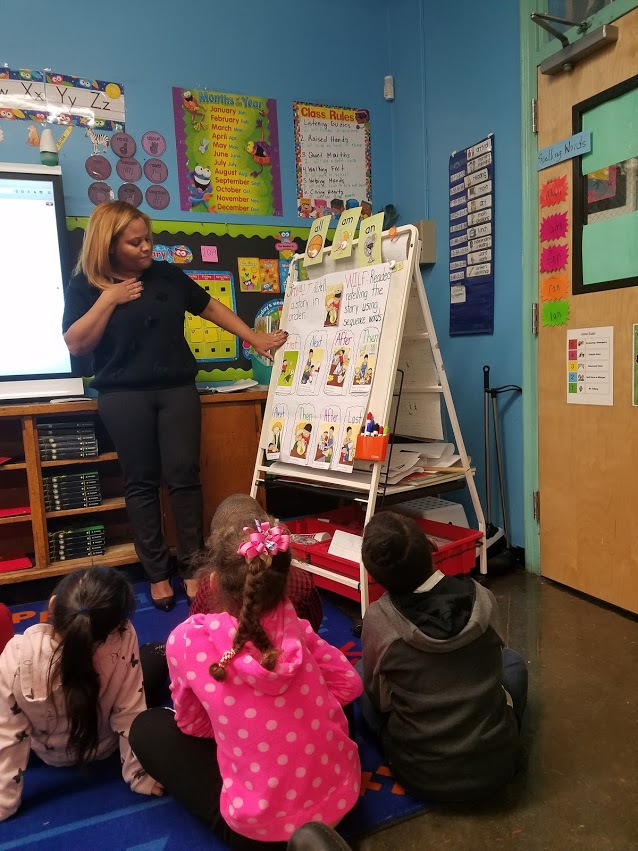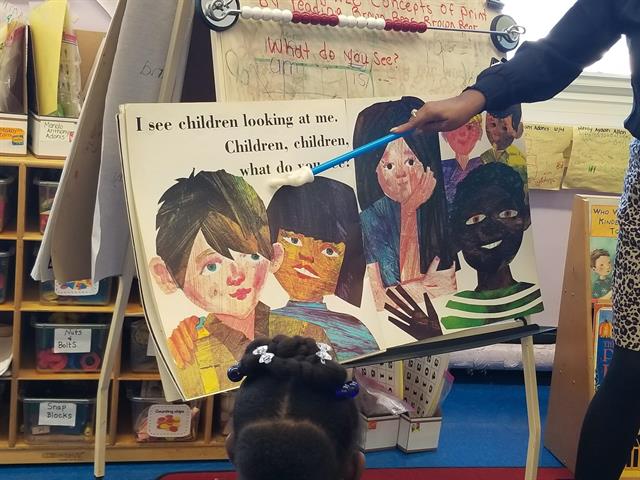We work diligently to ensure that all students are provided with research-based literacy instruction from trained and knowledgeable teachers.
Supports to Expect at Your Child's School
 K–2 literacy curriculum is guided by our Universal Literacy initiative, which strives to ensure that all children are reading on grade level by the end of second grade. Through the initiative, schools receive support from a dedicated reading coach, who supports kindergarten through second grade teachers to improve your child’s achievement. If your child speaks a language other than English at home, or if they have reading delays, your school receives extra supports.
K–2 literacy curriculum is guided by our Universal Literacy initiative, which strives to ensure that all children are reading on grade level by the end of second grade. Through the initiative, schools receive support from a dedicated reading coach, who supports kindergarten through second grade teachers to improve your child’s achievement. If your child speaks a language other than English at home, or if they have reading delays, your school receives extra supports.
How Children Learn to Read and Write
If you want to learn more about how children learn to read and write, read A Child Becomes a Reader: Proven Ideas from Research for Parents. It also provides activities you can do with your child to help them become a reader and what to look for in quality reading instruction at each grade level.
Find Books at the Library

You can access a variety of reading materials, including picture books, chapter books, magazines, poetry books, and more by visiting a public library. You can apply for a library card for free. Borrowing from the library means you can have many books in your home for your child to explore at no cost to you.
Libraries often stock audio books and dual-language books. Listen to audio books in the car or as a family at home together. Many libraries also let you download e-books through their websites.
Visit your local branch today!
Follow the links for a list of locations in your borough. We have also included links to each library’s online early literacy resources.
Brooklyn
Brooklyn Public Library
Locations
BPL early literacy resources
Manhattan, the Bronx, and Staten Island New York Public Library
NYPL locations
NYPL early literacy resources
Queens
Queens Library
Locations
QL early literacy resources
Support Your Child at Home
Every day, there are fun and easy ways to help your child build a lifelong love of reading.
Ages 3–4 (3-K and Pre-K)
Talk
- Talk to your child in any language.
- Make up stories together. Take turns imagining what comes next!
- Describe the sounds you hear, like beeping cars, vrooming buses, and barking dogs.
Play
- Sing songs and play rhyming word games together, in any language.
- Visit the playground and count each time the swing goes back and forth!
- Go to the park and look for interesting objects. Compare them by shape and color.
Read
- Read street signs, labels, and even cereal boxes!
- Help your child pick out their own books at your local library. Sign up for a free library card!
- Re-read your child’s favorite books in any language your family speaks.
Download and print a tip sheet or poster to have on hand as you read with your child:
Ages 5–8 (Kindergarten–Grade 2)
Talk
- Ask questions! Try asking about words that rhyme, like “What word rhymes with car?”
- Follow your child’s lead. If they seem interested in a book or topic, keep talking about it!
- If you watch a movie or TV show together, talk to your child about what you’re watching. Ask, “What do you think will happen next?”
Play
- Try a game of I Spy! “I spy with my little eye something beginning with the sound ‘f-f-f-f.’ What do you think it is?”
- Ask your child to play rhyming games on the bus, on the subway, or in the car. "I rhyme with mat. I am a…"
- Play board games like Scrabble, or write letters on a piece of paper and see what words your child can make.
Read
- Visit your local library to read together or take home books. Sign up for a free library card!
- Read books out loud together, in any language. Choose books your child is interested in.
- When you’re out together, ask if your child can sound out words on store fronts and street signs.
Download and print a tip sheet or poster to have on hand, as you read with your child: